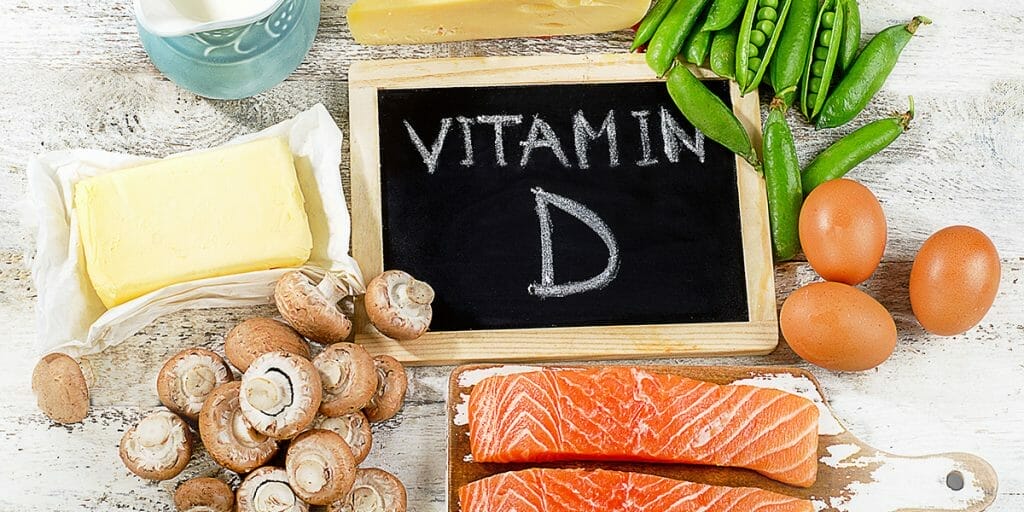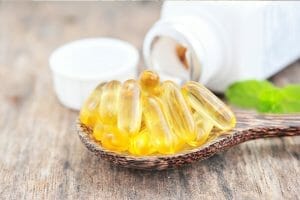
Since the 1930s, public health officials in the United States and the United Kingdom have recommended routine fortification of foods like milk to prevent vitamin D deficiency and low vitamin D status, and this was trusted to be an effective public health strategy. However, there was an increased incidence of hypercalcaemia suspected to be due to massive intakes of vitamin D from various food fortifications. In some cases, hypercalcaemia was proposed to be associated with drinking vitamin D-fortified milk and milk powder, revealing a fortification of up to 232,565 IU instead of standard 400 IU/1.5 pints, and consequently, prohibition of milk fortification followed. Discussions related to further vitamin D food based fortification are ongoing in the UK, including whether or not to fortify wheat flour, as Birmingham University researchers have proposed the health benefit to the population and cost savings to the NHS would be substantial.
In the meantime, the consumption of vitamin D supplementation in the UK, including the provision of free vitamin D supplements by the NHS to the allocated population groups has increased substantially. The growing awareness of vitamin D’s importance in human health and the challenge of ensuring suitable sunlight conversion in the general population during the long periods of reduced sunlight has meant an increase in its use. Over-the-counter vitamin D utilisation with very high doses, does include a risk for uncontrolled use and exogenous hypervitaminosis D, resulting in high concentrations of serum 25(OH)D or free 1,25-dihydrox-yvitamin D [1,25(OH)2D], leading to hypercalciuria and finally hypercalcemia. However actual reports of vitamin D overdose is rare in the published data.
On the other side of the narrative, prevalence of severe deficiency of vitamin D defined as 25(OH)D <30 nmol/L (or 12 ng/ml), of 5.9% (US), 7.4% (Canada), and 13% (Europe) have been reported. Higher estimates of the prevalence of 25(OH)D levels <50 nmol/L (or 20 ng/ml) have been reported as 24% (US), 37% (Canada), and 40% (Europe) in the same papers. This may vary by age, with lower levels in childhood and the elderly, and also ethnicity in different regions, for example, European Caucasians show lower rates of vitamin D deficiency compared with non-white individuals.
Worldwide, many countries report a very high prevalence of low vitamin D status. 25(OH)D levels <30 nmol/L (or 12 ng/ml) in >20% of the population are rife in India, Tunisia, Pakistan, and Afghanistan. It has been estimated for example that 490 million individuals are vitamin D deficient in India. Certain categories of patients have a very high prevalence of vitamin D deficiency. Typically characterised by an insufficiency or failure of organs involved in vitamin D metabolism. Renal failure patients and individuals on haemodialysis, or renal transplant recipients affected with liver disease or after liver transplantation may have a prevalence of vitamin D deficiency ranging from 85 to 99%.
 To maintain optimal vitamin D status (>50 nmol/L but <120nmol/L), use of vitamin D supplementation is often required, as sunlight exposure and dietary intake alone is usually insufficient in most individuals. Currently, no international consensus exists on the optimal level for vitamin D supplementation. Recommendations therefore differ in many countries and range from 400 to 2000 IU daily. A safe and commonly available dose of 25 μg of vitamin D3 (1000 IU) raises 25-hydroxyvitamin D [25(OH)D] serum level by 15-25 nmol/L on average (over weeks/months). By using the above-mentioned recommended vitamin D supplementation levels, there is really no need to monitor serum or urinary calcium or renal function.
To maintain optimal vitamin D status (>50 nmol/L but <120nmol/L), use of vitamin D supplementation is often required, as sunlight exposure and dietary intake alone is usually insufficient in most individuals. Currently, no international consensus exists on the optimal level for vitamin D supplementation. Recommendations therefore differ in many countries and range from 400 to 2000 IU daily. A safe and commonly available dose of 25 μg of vitamin D3 (1000 IU) raises 25-hydroxyvitamin D [25(OH)D] serum level by 15-25 nmol/L on average (over weeks/months). By using the above-mentioned recommended vitamin D supplementation levels, there is really no need to monitor serum or urinary calcium or renal function.
There is no international consensus on the safe upper level for vitamin D supplementation. While the upper daily limit given by the Endocrine Society is 10,000 IU, the IOM and The European Food and Safety Authority recommend staying below 4,000 IU/per day (100 µg). Most countries have cautiously set the safe upper level at 50 μg daily (2,000 IU) for adults. However, this level was set despite the availability of adequate studies of dose–response relationships or toxicity.
There is no convincing published evidence that daily intakes of up to 125 μg (5,000 IU) elicit severe adverse effects. JAMA has also reported that an intake of 1250 µg (50,000 IU) once every 2 weeks for several years, equivalent to 89.3 µg (3,571 IU) daily, did not cause hypercalcemia or other evidence of hypervitaminosis D.
So where does this leave us?
Essentially oral supplementation of 5,000iu daily may be considered safe in a patient with normal Vit D levels, and restorative in someone whose Vit D is low. But daily doses of 2000iu, if a blood level above 50 nmol/L, should sustain adequacy even during periods of sunlight deprivation.
Periodic blood tests are worth considering depending on age, skin colour, diet, health and genes.

2 Comments. Leave new
Dear Michael and Antony,
Thank you for an interesting article, to remind us of the importance of optimal vitamin D levels. You state optimal vitamin D status should be between 50 and 120 nmol/L, with a link to the article “The big Vitamin D mistake” in Preventive Medicine and Public Health (thanks, it is a brilliant article!).
However, in the article, the author notes:
“Since 10 000 IU/d is needed to achieve 100 nmol/L [9], except for individuals with vitamin D hypersensitivity, and since there is no evidence of adverse effects associated with serum 25(OH)D levels <140 nmol/L, leaving a considerable margin of safety for efforts to raise the population-wide concentration to around 100 nmol/L, the doses we propose could be used to reach the level of 75 nmol/L or preferably 100 nmol/L."
Shouldn't our recommendation to clients be to aim for at least 75nmol/L with an upper limit of 140 nmol/L? Especially as the incidence of toxicity is so rare, as you have stated?
Hi Rika, The level of 120-nmol/L is a median taget, you range levels based on the research available are also perfectly acceptable.